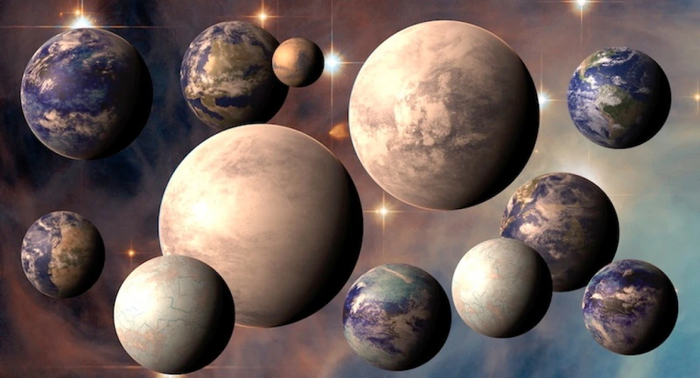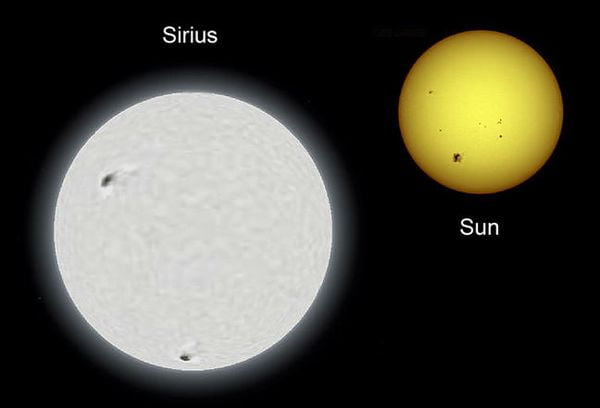A planet outside our solar system that revolves around a star is an exoplanet or extrasolar one. Here is a list of habitable exoplanets and possible exoplanets. We introduce you to the top 10 potentially habitable exoplanets based on habitability estimates from the habitable exoplanets catalog (HEC) and the NASA Exoplanet Archive data. The Planetary Habitability Laboratory operates the HEC at the University of Puerto Rico in Arecibo.

Kepler-62e
A super-Earth exoplanet known as Kepler-62e was found to orbit within Kepler-62’s habitable zone. It is located in the constellation of Lyra, 1,200 light-years (370 pc) away from Earth. The exoplanet was identified using the transit method, which assesses a planet’s dimming influence on a star. Kepler-62e could be a terrestrial or ocean-covered planet located in the habitable zone of its host star. Kepler-62e makes a 122-day orbit around its host star and has a diameter that is nearly 60% greater than that of Earth.
Kepler-62f
Kepler-62f is a super-Earth exoplanet in good standing that’s found within the habitable zone of the star Kepler-62. It is located at an approximate 1,200 light-years from Earth in the constellation Lyra. Astronomers and astrobiologists use the term circumstellar habitable zone to refer to the area around a star where a planet with sufficient atmospheric pressure can sustain liquid water on its surface.
Kepler-186f
A planet dubbed Kepler-186f is the habitable planet orbiting the red dwarf Kepler-186, approximately 550 light-years from the Earth. It is said to be the first planet with a radius resembling Earth to be discovered in the habitable zone of another star by NASA’s Kepler spacecraft. Kepler-186f has an orbital radius roughly 0.40 times Earth and orbits its star with a brightness of 4% that of the Sun. This system’s habitable zone is thought to cover a range of distances receiving between 88 and 25 percent of Earth’s light.
Kepler-296e
Kepler-296 was identified as the habitable zone of planet Kepler-296, where liquid water could exist on the planet’s surface. Kepler discovered it by measuring the transit of the planet. NASA announced the discovery of this planet on February 26, 2014. Kepler-296 appeared to be a space appropriate for life, with water on the planet’s surface.
Kepler-296f
Kepler-296f is one of the confirmed habitable exoplanets. The planet was discovered by NASA’s Kepler spacecraft using the transit method. The planet is located within the habitable zone of Kepler-296, a region where liquid water could exist on the planet’s surface.
Kepler-438b
Kepler-438b is a confirmed near-Earth-sized habitable exoplanet, likely rocky, orbiting on the inner edge of the habitable zone of the red dwarf as it receives 1.4 times our solar flux. Kepler-438, about 470 light-years from Earth in the constellation. It is approximately 470 light-years from Earth. The planet was announced as orbiting within the habitable zone of Kepler-438.
Kepler-440b
An exoplanet orbiting Kepler-440b is confirmed to be in the habitable zone. Kepler-440b’s radius is 0.186 times that of Earth, and it orbits Kepler-440 once every 101.1 days. The confirmation was published on January 6, 2015, by NASA.
Kepler-442b
Kepler 442b is a member of the class of rocky exoplanets orbiting within the habitable zone of the K-type main-sequence star Kepler 442, which is believed to be about 1,120 light-years from Earth. K-type main-sequence stars are typically smaller than the Sun and live longer than the Sun, lasting approximately 15 to 30 billion years.
Kepler-22b
The typical distance that separates Kepler-22b from its host star, Kepler-22, is approximately 15 % shorter than the distance that separates Earth and the Sun. Suppose it is assumed that the surface is not subject to excessive greenhouse heating. In that case, this combination of a closer average distance from the star and a lower stellar luminosity is consistent with a sufficient surface temperature at that distance.
Wolf 1061c
Wolf 1061c, also known as WL 1061c, is an exoplanet that orbits within the habitable zone of the red dwarf star Wolf 1061 in the constellation Ophiuchus. It is the fifth closest exoplanet at a distance of approximately 13.8 light-years from Earth. It has an orbital period of 17.9 days and is the second planet from its primary star in the triple planetary system. Exoplanet Wolf 1061c is categorized as a super-Earth.








